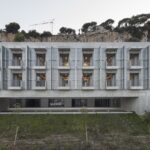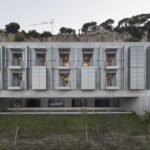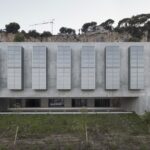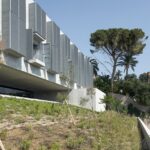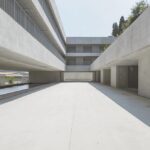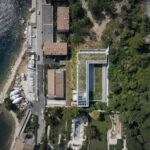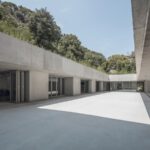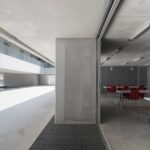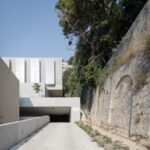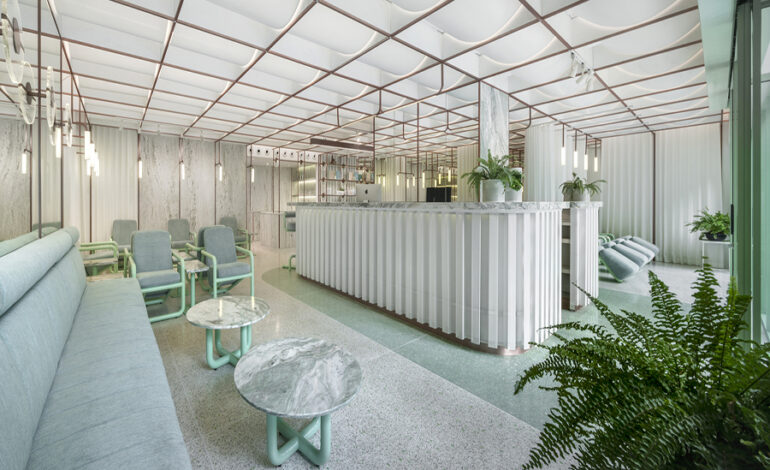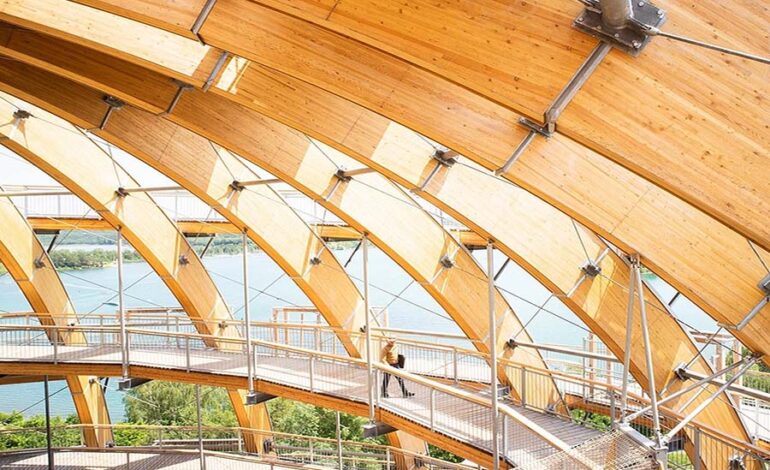Exploring Maritime Research: Institute of Marine Sciences

Architectural Harmony with Nature
The Institute of Marine Sciences, crafted by CAB Architects, stands as a bastion of oceanic research, nestled along the coastal cliffs. Designed to blend seamlessly with its Mediterranean surroundings, the campus offers a unique blend of hospitality and environmental context, catering to the needs of researchers amidst the coastal splendor.
Infrastructural Integration
Perched at the base of a rugged cliffside, the institute ingeniously utilizes the site’s contours to shape its architectural narrative. Comprising two L-shaped volumes, the building harmoniously marries function with form. One volume serves as a foundational base housing communal spaces, while the other, suspended above a pool, accommodates individual rooms. This juxtaposition creates a captivating spatial interplay, anchored by a central patio that extends towards the sea.
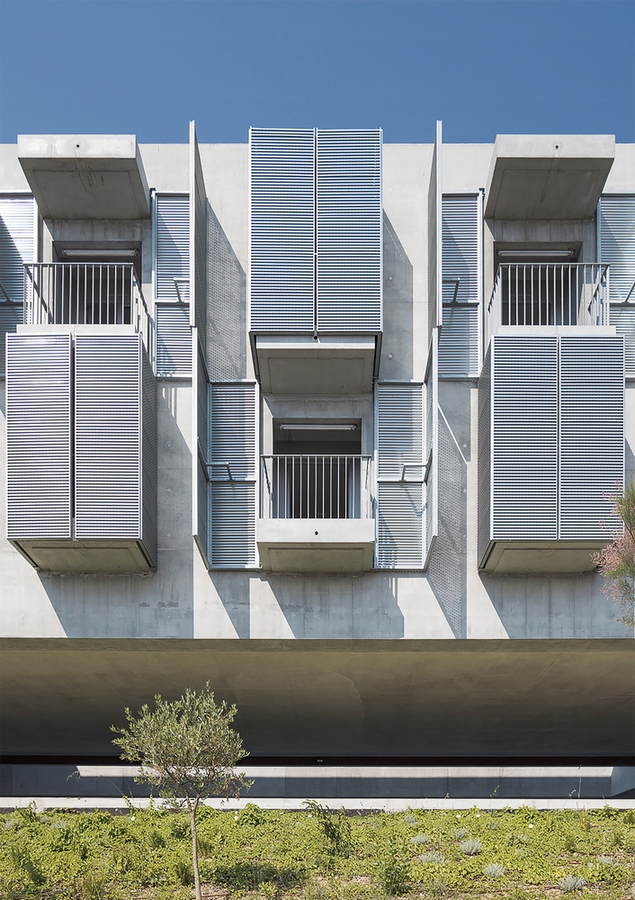
Material Palette and Design Philosophy
Constructed from locally sourced concrete, reminiscent of the nearby cliffs, the institute pays homage to its natural surroundings. Metal shutters, reminiscent of historic architectural elements, add a touch of heritage to the contemporary design. This fusion of traditional materials with modern aesthetics creates a dialogue between past and present, enriching the architectural narrative.
Spatial Dynamics and Functionality
Internally, the institute reflects a balance between introspection and connectivity. Common areas, bathed in natural light, seamlessly blend with the surrounding landscape, fostering a sense of openness and collaboration. The design prioritizes functionality, catering to the practical needs of researchers while embracing the site’s topographical challenges.
Environmental Sensibility
Embracing the Mediterranean climate, the institute employs passive cooling techniques, harnessing sea breezes and natural ventilation to regulate internal temperatures. The strategic placement of the pool and patio facilitates airflow, creating a comfortable environment for research and study.
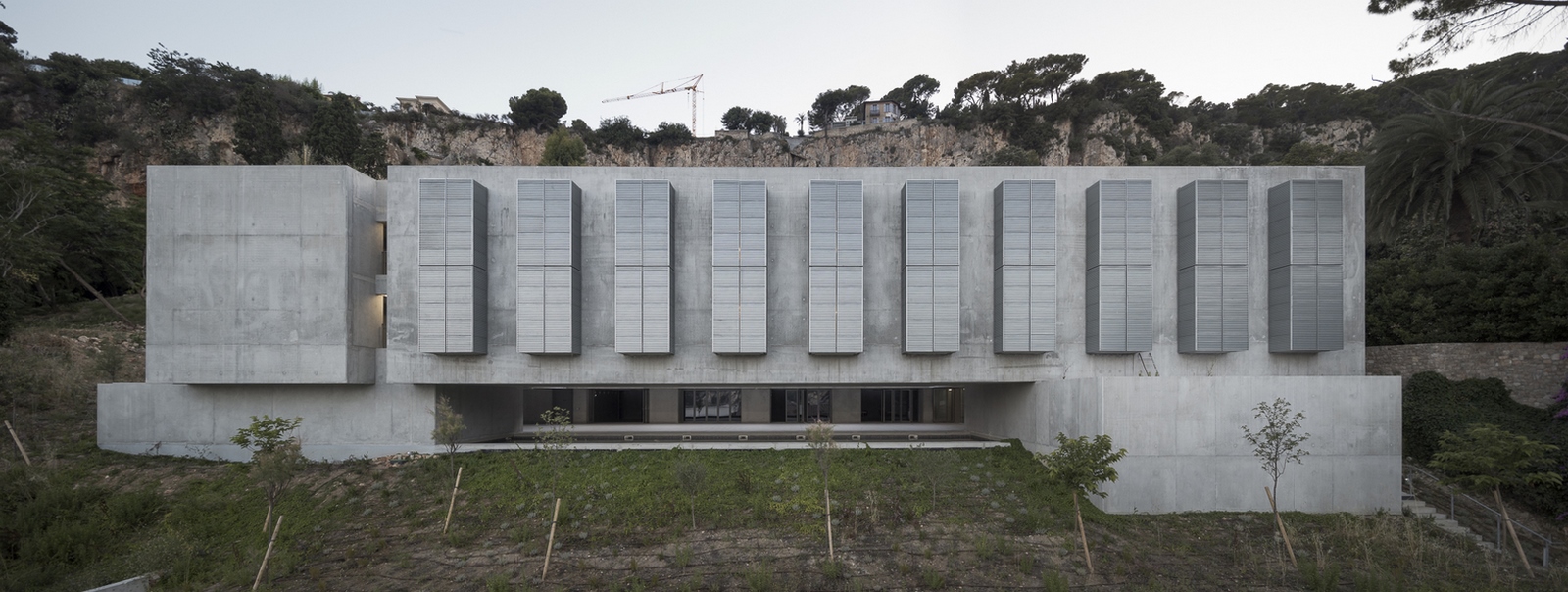
Artisanal Craftsmanship and Sustainability
Incorporating locally available materials, such as concrete and steel, the institute celebrates the region’s rich architectural heritage. The use of in-situ casting techniques adds an element of unpredictability, infusing the project with a sense of authenticity and vitality. This commitment to craftsmanship ensures the longevity and resilience of the building, offering a welcoming space for future generations of researchers.
Conclusion
The Institute of Marine Sciences stands as a testament to the symbiotic relationship between architecture and environment. By embracing the unique characteristics of its Mediterranean setting, CAB Architects have created a space that fosters innovation, collaboration, and discovery, inspiring a new generation of maritime researchers.
